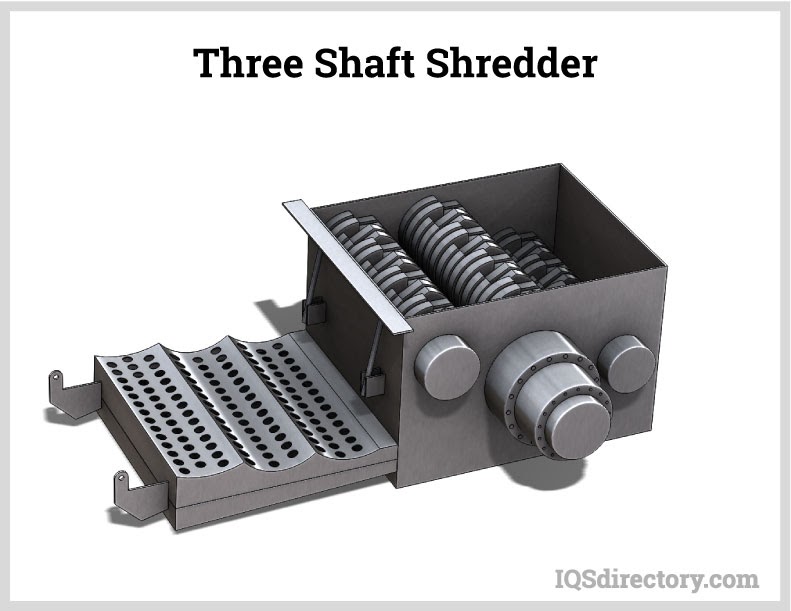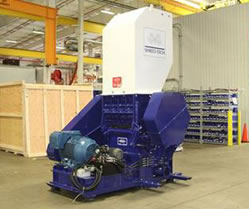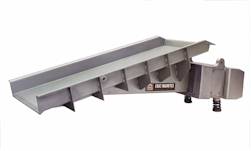Material Separation
Material separation is an important first step in the recycling process. Recovering products from the waste stream and making sure that they end up in the right category to be recycled is difficult but essential to efficient recycling practices. Recycling plants are always trying to raise their recovery rate to keep as much material as possible out of landfills and lower energy consumption by making new products out of these used materials. The right separation equipment properly tuned for a specific application will always play a serious role in creating a greater rate of recovery. Workers can separate some materials manually, but separation is always more effective with the aid of a machine, particularly when dealing with high volumes of material.
As technology improves and more and more recovery centers do everything they can to raise their recovery rate, more materials are able to be eliminated from the waste stream and repurposed for new uses. The result is a reduced impact on landfills and a healthier approach to environmental care. Material separation equipment plays a key role in helping to maximize the efficiency and effectiveness of this process. Technology has led to many innovative separation tools and techniques, but here are the main tools:
Magnetic Separators
Magnetic separators assist in separating ferrous materials from non-ferrous materials. This is accomplished by exposing the unsorted material to a powerful magnet that is mounted over a conveyor belt or in a chamber. The magnetic force pulls out the ferrous metals, and leaves the rest. Magnetic separating equipment is very convenient in metal recycling facilities because it keeps material moving in scrap yards and other high volume facilities.
Air Separators
An air separation unit can be used to remove light debris and low value materials from a stream of potentially recyclable waste. In most cases, high pressure air is blown over the drop off point of a conveyor, allowing the heavier material to fall away to the next conveyor while the light material is blown into a bin or some other depository. Other air separators may use vacuum or cyclone technology to suck lightweight, non-metallic materials from the waste stream instead.
Eddy Current Separators
An eddy current separator is an advanced piece of material separating equipment that has the ability to separate non-ferrous metals like aluminum and copper out of a waste stream. An eddy current separator uses a powerful magnetic field to separate non-ferrous metals. However, unlike a magnetic separator which pulls out ferrous materials by attracting them, an eddy current separator actually causes an opposing magnetic field to form within the non-ferrous metals and thus repels these materials. For this reason, the separator is typically placed at the end of a conveyor where the non-ferrous materials are thrown forward into their own bin while other materials simply fall off the conveyor into a separate bin. It is important to note that all ferrous metals should be removed from the waste stream before the eddy current separator is used, as these materials can cause problems with the separator.
Screeners
The meticulous task of sorting mixed recyclables can also be accomplished by screeners. Screeners are another type of material separation equipment, which, as their name suggests, separate materials through the use of different types of screens. Screeners utilize a more mechanical approach to separation than the separators listed above, but they also come in a huge variety of styles and sizes to meet the requirements of different applications and to specialize them for particular materials. Below are several types of screeners used for recycling applications:
Vibratory Screeners
One very common screening machine is a vibratory screener. Recyclable materials are fed into the vibratory screener and across a screen. The machine constantly generates vibrations in the screen which causes the recyclables to jostle around. This movement dislodges smaller components from the general bulk of recyclables, and these smaller components can then fall through the screen into their own bin or continue on in the recycling process. These screeners are very valuable for separating materials by size, and since larger materials generally require more processing, this type of separation can save time and energy by pulling out smaller pieces that do not need the extra processing. Read more…
Rod Decks
Rod deck recycling screens are a specially designed version of a vibratory screener. Instead of a normal grid screen, the rod deck consists of several rows of rods. Much like a vibratory screen, as material is fed into the rod deck, the machine generates vibrations which cause the material to jostle and bounce, loosening smaller bits from the bulky materials. Though their operation is essentially the same, rod decks are better equipped to separate wet, abrasive, heavy, and difficult to handle materials. The flexibility and reduced surface area of the rods keeps materials from sticking and blinding, making this kind of separation equipment a huge asset in many recycling applications.
Disc Screeners
A disc screener is made by creating a series of discs that rotate around a rod and then lining the rods up side by side so that materials can be pulled over them and smaller materials fall through the space between the discs. The rotation turns objects over during motion, so that after a few feet any smaller bits of material have fallen through the discs. In a recycling plant, a disc screener can improve recovery rates when the disc sizes are designed with particular materials in mind.
Star Screeners
A star screener is similar to a disc screener, except star shaped implements are used instead of discs to screen material. These horizontally mounted star shaped pieces pull in fractured material and help to recover damp and cohesive material by separating it. The speed of the screen’s rotation can be adjusted based on the type of material being processed in the recycling facility.













 Balers
Balers Compactors
Compactors Granulators
Granulators Grapplers
Grapplers Metal Shears
Metal Shears Separators
Separators Shredders
Shredders Vibratory Feeders
Vibratory Feeders Castings & Forgings
Castings & Forgings Bulk Material Handling
Bulk Material Handling Electrical & Electronic Components
Electrical & Electronic Components Flow Instrumentation
Flow Instrumentation Hardware
Hardware Material Handling Equipment
Material Handling Equipment Metal Cutting Services
Metal Cutting Services Metal Forming Services
Metal Forming Services Metal Suppliers
Metal Suppliers Motion Control Products
Motion Control Products Plant & Facility Equipment
Plant & Facility Equipment Plant & Facility Supplies
Plant & Facility Supplies Plastic Molding Processes
Plastic Molding Processes Pumps & Valves
Pumps & Valves Recycling Equipment
Recycling Equipment Rubber Products & Services
Rubber Products & Services